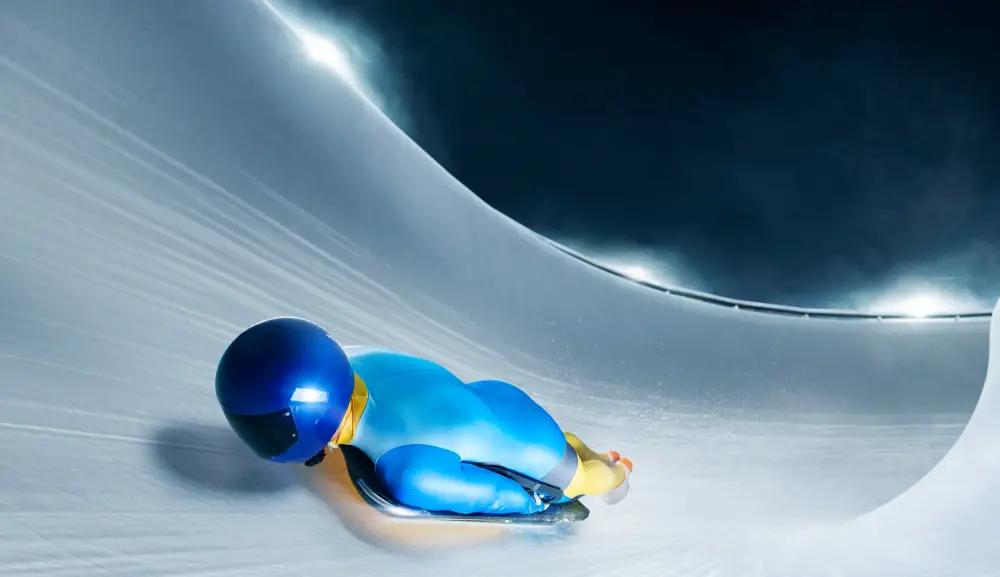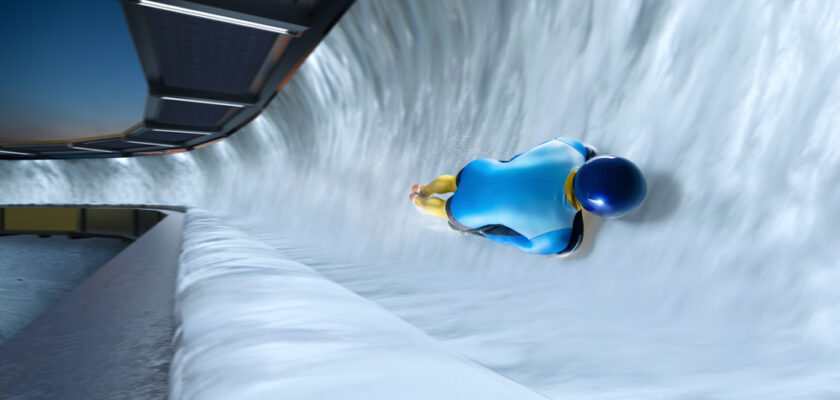The luge is a winter sport in which athletes race down an ice rink at high speed, lying on their backs on a sled. Born in Europe, the sport has been part of the Winter Olympics since 1964.
The sport is known for combining physical and technical skills, and to make this mission easier there are some rules to follow. With this in mind, we’ve created a special article with the main rules of luge!
You’ll learn more about the place of play, equipment used, duration of events, scoring, infractions, penalties and much more. So get your notes ready and learn about the rules of luge!
Open your Betano account and get up to 1,000 reais in bonuses.
PIX payments, live games and super odds!
Click here to open your account!

Luge rules: complete list
- Game location;
- Equipment;
- Duration;
- Scoring;
- Competitors;
- Infractions and penalties;
- Match;
- Safety.
Luge rules: place of play
A luge track is an artificially cooled ice structure. According to the rules of the International Luge Federation (FIL), an official rink must be between 1,000 and 1,500 meters long.
This ice rink must also include several curves and straights, with at least 11 turns and a total gradient of between 110 and 150 meters.
The minimum width of the track is 1.3 meters, and the sides must be protected by safety barriers that help keep the athletes on the track in case of loss of control.
Luge rules: equipment
Luge athletes use a small sled that must weigh between 21 and 25 kg for men, and between 21 and 23 kg for women. It is built using a combination of powerful materials such as steel and fiberglass, guaranteeing the object’s strength and lightness.
In addition to the sled, athletes wear tight-fitting, aerodynamic clothing, helmets with visors, gloves and special shoes with studs on the end to help with initial propulsion.
The rules of the sport stipulate that the equipment must be inspected before the competition, thus ensuring that it complies with FIL regulations.
Any unauthorized modification may result in disqualification.
Luge rules: duration
The duration of a luge event is determined by the time it takes the athletes to complete the descent on the track.
In Olympic competitions, athletes usually make four descents, with the total time being the sum of the times for each descent. The athlete with the shortest total time is declared the winner.
Each descent usually lasts between 45 seconds and 1 minute, depending on the length and complexity of the ice rink.
It is crucial that athletes maintain the maximum speed possible while precisely controlling the sled through the curves and straights of the track.
Luge rules: scoring
Scoring in the luge is based on the total time of the descents, with the aim of obtaining the shortest time possible. The precision of the stopwatch is vital, and it is measured down to the thousandths of a second. The athlete with the lowest sum of times on the descents is the winner. In the event of a tie, the best time on a single descent is used as the tie-breaker.
For team competitions, the times of the team members are added together to obtain a total time. The team with the lowest total time is declared the winner. This simple and straightforward scoring system ensures that the focus is on the skill and precision of the athletes.
Luge rules: competitors
Luge competitions can be individual or in pairs. Here’s how it works!
- In the individual events, both men and women compete separately. Each country can enter up to three athletes per category.
- In the doubles races, two athletes go down together in the same sled, and there is no gender distinction, allowing for male, female or mixed doubles.
During the Olympic Games, there is also a team competition, which consists of a man, a woman and a pair. The sum of the downhill times of each team member determines the final ranking!
Luge rules: infractions and penalties
Infractions in luge are taken very seriously, as they can compromise the safety of competitors and the integrity of the competition.
Some of the most common infractions include starting before the signal, the use of unregulated equipment, or illegal alterations to the sled.
Penalties, then, can range from warnings to disqualification, depending on the seriousness of the infraction committed by the athlete.
A start before the signal, for example, results in a time penalty added to the athlete’s total time. Illegal modifications to the sled can lead to immediate disqualification and are strictly forbidden!
Luge rules: starting
The start procedure in luge is also regulated. Here’s how it works!
The athletes start off sitting on the sled and use gloves with nails in them to push off the starting bars.
Then they quickly lie down on their backs, keeping their heads up just enough to see the course ahead.
The time starts counting as soon as the sled crosses the starting line. Therefore, any movement before the start signal results in penalties.
Starting technique is crucial, as a good start can significantly influence the total time of the descent and lead the athlete to victory!
Luge rules: safety
Safety, as we mentioned earlier, is a top priority in luge, both for the athletes and the spectators enjoying the event.
For this reason, the tracks are designed with various safety measures, including guard rails, safety nets and escape areas in case of an accident. Helmets are compulsory in the luge, and sleds are designed to minimize the risk of injury in the event of a collision.
In addition, it is worth remembering that all official competitions have medical and rescue teams ready to intervene in the event of accidents, whether minor or serious.
Safety training and emergency simulations are held regularly to ensure that everyone is prepared for any eventuality.

Luge rules: complete list
- Game location;
- Equipment;
- Duration;
- Scoring;
- Competitors;
- Infractions and penalties;
- Match;
- Safety.
That was our list of the main rules of luge! Now that you’re more up to date with the sport, it’s time to check out more news, lists and special articles about the sports world by browsing the site!



